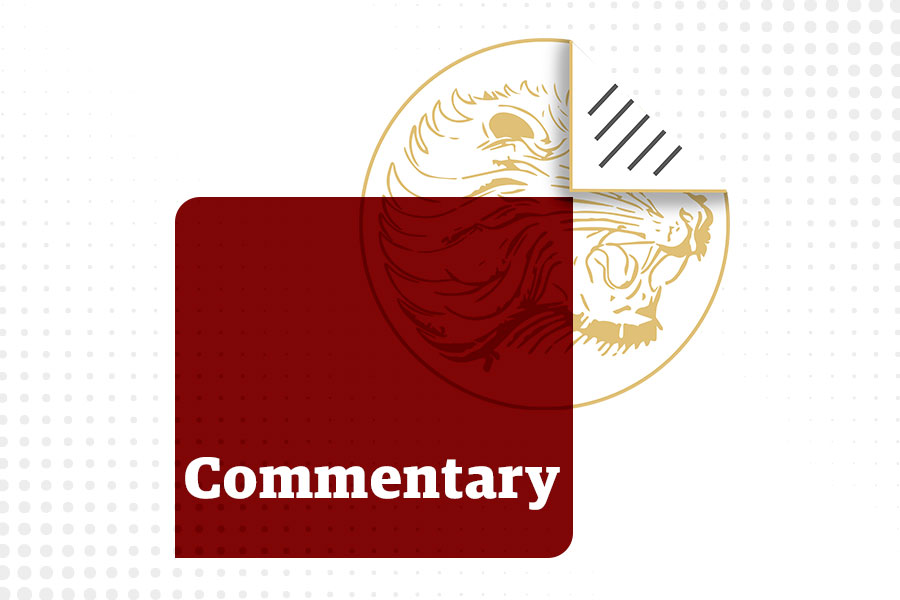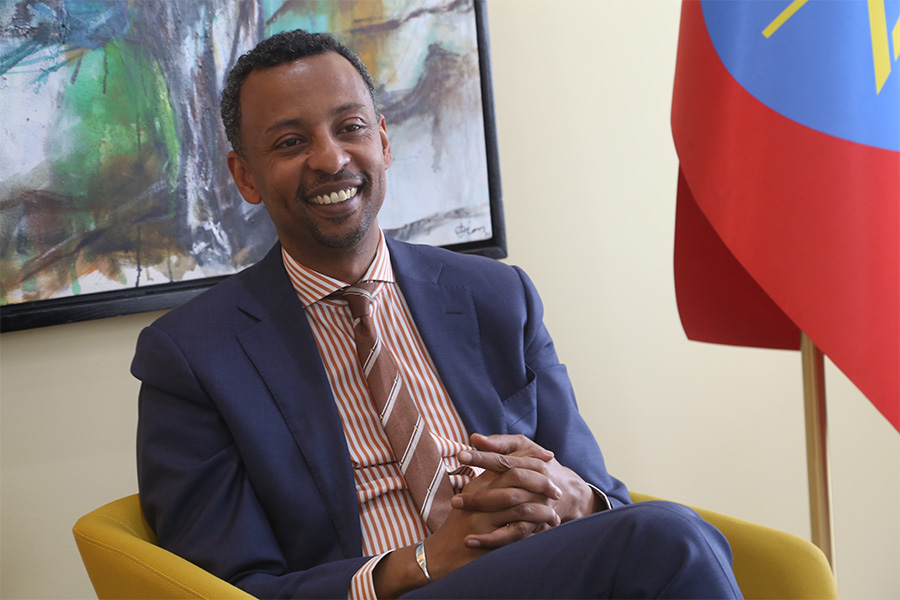
Radar | May 18,2024
Oct 18 , 2025
By Mugwe Manga
While solar and hydropower depend on the whims of weather, geothermal energy offers a steady hand. Drawing from the Earth’s internal heat, geothermal plants can generate power around the clock. In a continent where droughts can halt hydropower and clouds can stifle solar, this constancy is more than an advantage. It is a necessity.
Africa is on a quest to deliver universal energy access and advance green industrialisation, but it is still struggling to deliver reliable baseload electricity. Power outages and shortages cost Nigeria's economy an estimated 26 billion dollars annually, and Ethiopia and Uganda routinely face blackouts, as droughts reduce hydropower.
Across the continent, expensive and polluting diesel generators are used to bridge the gaps, with Nigerian businesses, for example, spending about 22 billion dollars on off-grid fuel each year. But there is a renewable-energy technology that could go a long way toward meeting African demand. Most renewable energies are fickle. Solar, wind, and hydropower can be generated only under certain weather conditions. Disruptions are always a possibility.
In Africa, where grid operators lack resources and infrastructure is brittle, such shocks could be crippling.
Geothermal energy avoids these issues by harnessing Earth's natural internal heat. The steam trapped in rock formations deep underground is released, and used to drive turbines for electricity generation. Since radioactive decay constantly produces extreme heat in these reservoirs, geothermal energy can always be generated, making it an ideal candidate for supporting a reliable power supply.
Geothermal energy does have some drawbacks, too. Drilling deep into the surface and installing the necessary equipment to generate energy is a slow and capital-intensive process, which can begin only after a costly exploration phase, involving extensive geological surveys. Geothermal energy production also carries environmental risks, and geothermal reservoirs are found only in certain locations, such as near tectonic plate boundaries.
But the benefits far outweigh the costs. Once the initial investment is made, geothermal plants provide low-cost electricity for decades. On a large scale, geothermal can provide baseload stability, allowing other renewables, like wind and solar, to be harnessed to their full potential without disrupting the grid. As advances in directional drilling, data analytics, and AI applications lower costs and improve success rates, geothermal will become even more attractive.
While geothermal is not a solution everywhere, it can work in Africa, especially as production techniques improve.
Oil and gas firms, under pressure to move toward cleaner energy, are applying their expertise to geothermal ventures. Enhanced Geothermal Systems, for example, apply oil-and-gas-drilling techniques to access hotter rocks at greater depths. The International Energy Agency (IEA) estimates that Africa hosts nearly one-fifth of global EGS potential, some 115 terawatts. Tapping even one percent of that potential could, by 2050, meet Africa's entire electricity demand.
Kenya is leading the way on geothermal generation. Its first geothermal plant, Olkaria I, began operating in 1981, and currently has a capacity of 45Mw. Kenya's total installed geothermal capacity amounts to 985Mw, placing the country sixth globally. Geothermal now accounts for 47pc of Kenya's total electricity generation, making it the single largest renewable-energy source in a grid that is 93pc green.
Kenya's embrace of geothermal has contributed to a rapid expansion of energy access. In 2013, only 37pc of Kenyans had electricity; today, that share has risen to 76pc to 80pc. And there is plenty of room for further progress, as Kenya has so far tapped less than a tenth of its geothermal potential. KenGen, the state-backed utility, has plans to reach a gigawatt of installed capacity by 2026, and place Kenya among the world's top three geothermal producers by 2030.
But the benefits of geothermal systems extend well beyond electricity generation. For starters, geothermal reservoirs can be used for direct heating applications in sectors like horticulture, aquaculture, and food processing, all of which require stable heat sources. Kenya's Oserian flower farms pipe geothermal steam into greenhouses, leading to consistent and high-quality blooms. Crucially, such applications do not require access to the ultra-hot geothermal reservoirs located deep underground. More plentiful and accessible moderate-temperature reservoirs are sufficient.
Geothermal brines, a byproduct of geothermal electricity generation, often contain high concentrations of critical minerals, including lithium (essential for batteries) and rare-earth elements (used in many electronics). By extracting and exporting these high-value minerals, African countries could derive even greater benefit from the green transition.
Geothermal energy can also act as a powerful engine of economic integration across Africa. Already, regional "power pools," which coordinate electricity generation and transmission across borders, are laying the foundation for greater cohesion in Africa's fragmented energy market. The embrace of stable, widely available geothermal energy could accelerate this process, thereby supporting the African Union's vision of an African Single Electricity Market.
None of this will be easy, not least because geothermal lacks strong political support. Whereas geothermal exploration and installation is a protracted process, requiring significant risk-tolerant finance, dams and solar farms easily attract donor money and media headlines, offering the kinds of quick victories politicians crave.
But, if one takes a longer view, geothermal's potential is undeniable. By anchoring grids, geothermal can support the use of other renewables. By supplying heat, it can facilitate the decarbonisation of industries from food processing to textiles. By producing minerals, it can elevate Africa in global supply chains. And by supporting cross-border energy exchanges, it can accelerate the establishment of an integrated African electricity market, which is critical to improving energy access, reliability, and affordability across the continent.
PUBLISHED ON
Oct 18,2025 [ VOL
26 , NO
1329]


Radar | May 18,2024

Commentaries | Jun 08,2019

Verbatim | Mar 12,2022

Radar | Aug 07,2021

Viewpoints | Aug 03,2025

Photo Gallery | 175013 Views | May 06,2019

Photo Gallery | 165239 Views | Apr 26,2019

Photo Gallery | 155514 Views | Oct 06,2021

My Opinion | 136760 Views | Aug 14,2021

Dec 22 , 2024 . By TIZITA SHEWAFERAW
Charged with transforming colossal state-owned enterprises into modern and competitiv...

Aug 18 , 2024 . By AKSAH ITALO
Although predictable Yonas Zerihun's job in the ride-hailing service is not immune to...

Jul 28 , 2024 . By TIZITA SHEWAFERAW
Unhabitual, perhaps too many, Samuel Gebreyohannes, 38, used to occasionally enjoy a couple of beers at breakfast. However, he recently swit...

Jul 13 , 2024 . By AKSAH ITALO
Investors who rely on tractors, trucks, and field vehicles for commuting, transporting commodities, and f...

Oct 18 , 2025
The political establishment, notably the ruling party and its top brass, has become p...

Oct 11 , 2025
Ladislas Farago, a roving Associated Press (AP) correspondent, arrived in Ethiopia in...

Oct 4 , 2025
Eyob Tekalegn (PhD) had been in the Governor's chair for only weeks when, on Septembe...

Sep 27 , 2025
Four years into an experiment with “shock therapy” in education, the national moo...

Oct 18 , 2025 . By NAHOM AYELE
In a sweeping reform that upends nearly a decade of uniform health insurance contribu...

Oct 18 , 2025 . By BEZAWIT HULUAGER
A bill that could transform the nutritional state sits in a limbo, even as the countr...

Oct 18 , 2025 . By SURAFEL MULUGETA
A long-planned directive to curb carbon emissions from fossil-fuel-powered vehicles h...

Oct 18 , 2025 . By BEZAWIT HULUAGER
Transaction advisors working with companies that hold over a quarter of a billion Bir...